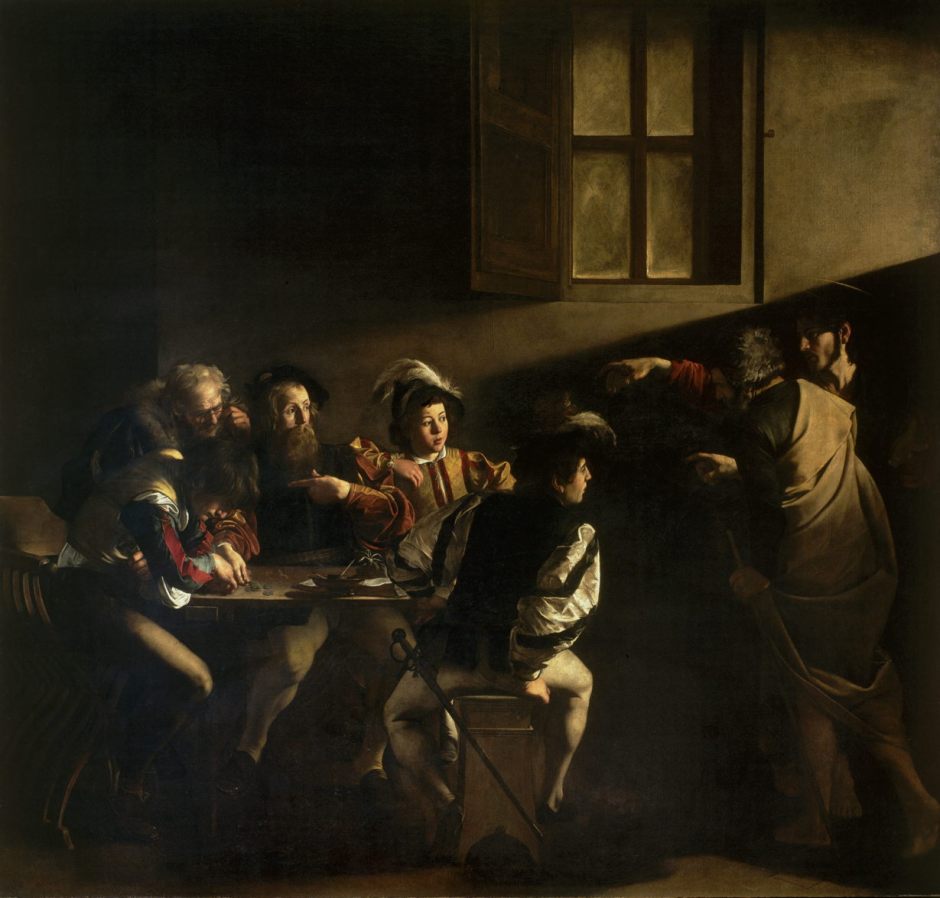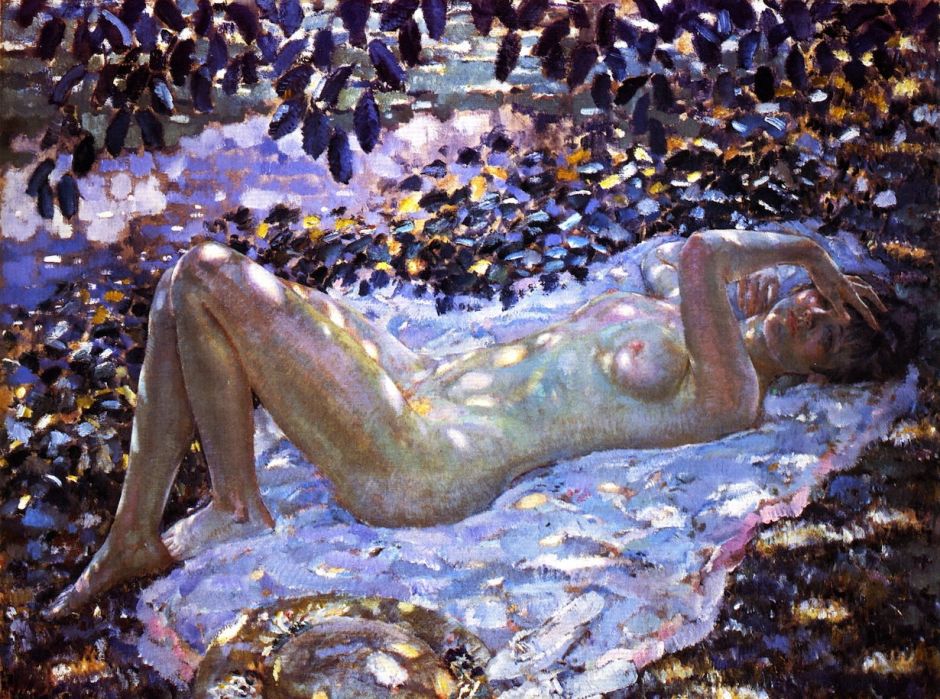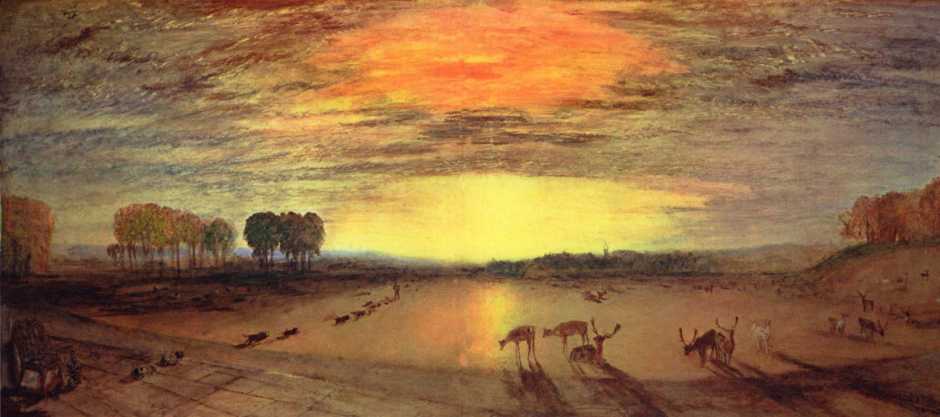If painting is about light, so too it must be about the absence of light, darkness, and notably shade and shadow. They’re what transforms a uniform disc into a sphere, and brings features to a face. Although their basic optics and geometry are relatively straightforward, and didn’t require the sort of analysis required for the faithful representation of perspective, shadows in particular prove sufficiently complex as to remain controversial even today.

The differences between shade and types of shadow are shown well in Giovanni Battista Moroni’s Portrait of a Gentleman with his Helmet on a Column Shaft (c 1555-56). Here the light source is to the right of and behind the viewer, forming a highlit band down the length of the marble column.
Either side of that highlight, the rounded surface is no longer perpendicular to the source of light, and the column falls gradually into shade. At its left edge, there’s no light falling directly onto the marble, and it’s dark with attached shadow, that’s the shadow from the object itself, and not cast by anything else. At the base of the column, the light is blocked by the gentleman’s right leg, where that limb’s cast shadow falls onto another surface.
You’ll see these optical phenomena referred to using other terms, but here I’ll keep to shade, attached shadow, and cast shadow for the sake of clarity.

These are also shown well in Harriet Backer’s Syende kvinne ved lampelys (By Lamplight) from over three centuries later, in 1890. The interior here is lit by a kerosene lamp on the table. There’s limited shade seen here, in the woman’s ear, and the left and right sections of beams in the ceiling, and attached shadow is visible on her back, the back of her upper arm, and the side of the black stove. Unusually prominent is the magnified cast shadow of the woman on the blue wall behind her. It’s easy to trace a line from the lamp to the top of the woman’s head, and project that to the top of the cast shadow to verify the optical accuracy of this painting.

Leonardo da Vinci was one of many artists who analysed these phenomena, here in two pages of shadow studies from 1490-92 that go into more subtle detail. Most light sources aren’t single points, but spread light through a solid angle. These two diagrams demonstrate how they lead to partial shadow, or penumbra.
For much of the Renaissance the emphasis in painting was on light rather than shadow, but the development of chiaroscuro changed that. It’s often assumed that its great exponents, particularly Caravaggio (1571–1610), came to master the optics of shadows.

Looking at Caravaggio’s famous Calling of St Matthew from about 1599-1600 you could easily be convinced that it was faithful to optics. There’s an abundance of shade and attached shadow, but despite the group being sat close around a table, not one of its figures casts shadow on another. If a modern artist or photographer were to light a similar composition, they’d need several lights and possibly reflectors too. For example, the head of Christ at the right is lit dramatically, but sufficient for his face to be recognisable, in spite of that part of the room being within strong cast shadow according to the wall immediately behind. What might look right could in fact be largely contrived.

Neither is his Supper at Emmaus from 1601 as consistent as it might appear. The lighting appears simpler here, with the main light source high to the left of the viewer, and highlights on the upper left surfaces of figures and objects. Quite crisp cast shadows with no visible penumbra are seen on the white tablecloth. Yet again no figure casts any shadow on another figure in this tight group. Christ’s right arm does cast a shadow across his right chest, but the main shadows cast by the figures fall on the wall behind Christ, which would require another light source lower on the left, which isn’t consistent with the cast shadows on the tablecloth.

Although we’re used to seeing cast shadows on figures in real life, in figurative painting they’re normally reserved for special effects like the flickering in Frederick Carl Frieseke’s Nude in Dappled Sunlight (1915), where the artist has carefully placed his model on a white sheet to reduce attached shadow.
Shadow is no simpler for the landscape painter.

Cast shadows can be important in landscape views, as shown so well in Gerrit Berckheyde’s view of Groote Market in Haarlem, Amsterdam from 1673. But ensuring cast shadows are coherent is a serious challenge to the landscape artist. Unlike an Impressionist oil sketch, this has been painted in a studio. Two centuries before the use of photography to record such views at a moment in time, the artist has here had to make separate studies of the light and shadows at a fixed elevation of the sun.

JMW Turner used cast shadows in many of his landscapes, particularly those at sunrise or sunset, when their very long cast shadows emphasise the time of day. Petworth Park: Tillington Church in the Distance (c 1828) is viewed from a high level to further exaggerate the length of its shadows.
Shade and attached shadows thus appear relatively uncontroversial, but cast shadows are more complicated.
Further reading
Michael Baxandall (1995) Shadows and Enlightenment, Yale UP. ISBN 978 0 300 07272 4.
Roberto Casati and Patrick Cavanagh (2019) The Visual World of Shadows, MIT Press. ISBN 978 0 262 03958 1.
EH Gombrich (2014/1995) Shadows. The Depiction of Cast Shadows in Western Art, Yale UP. ISBN 978 0 300 21004 0.

